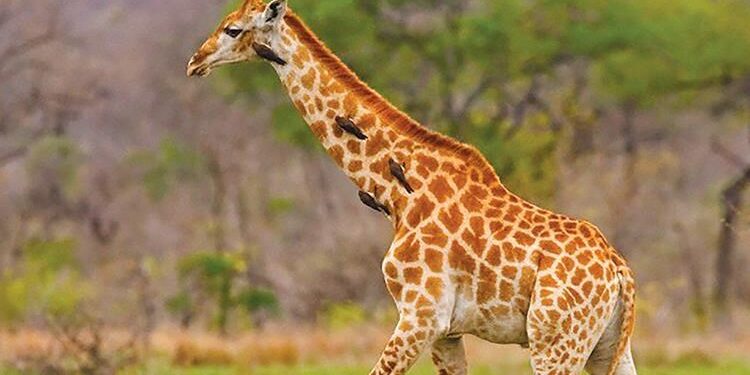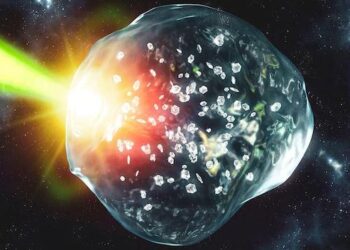Agencies-Gaza post
How did the giraffe get its long neck?
Scientists could not determine the exact process that led to the development of the giraffe’s long neck, but their assumptions were the cause of the development of its neck was due to high foliage.
A new hypothesis suggested by investigators is that this development was a defensive ploy for giraffes, based on an old ancestor who had a disc-shaped “helmet” on his head that he used to hit heads together.
Paleontologist Professor Tao Deng, of the Institute of Vertebrate Paleontology and Ancient Anthropology (IVPP) in Beijing, and his colleagues studied a strange type of early roller called Discokeryx xiezhi.
The Commission analyzed the fossilized remains of D. xiezhi, including a full skull and four neck vertebrae — found on the northern margin of the Junggar Basin in China’s northwestern Xinjiang region.
According to the researchers, the samples date back about 17 million years, during the Early Miocene era.
“Discokeryx xiezhi has many special features among mammals, including the development of a large, disc-like ossicone in the middle of his head,” Professor Deng said.
Ossicones are described as skeletons covered in skin, superficially similar to pods, which can be found on the heads of modern giraffes and male okapi.
It noted that D. xiezhi’s neck vertebrae are very strong and have the most complex joints of any known mammal between the head and neck and the vertebrae.
Furthermore, the researchers’ comment indicated that these complex joints were particularly suited to engaging in high-speed face-to-face effects – even more than modern animals such as musk bulls adapted to hit heads.
In fact, the team said, D. xiezhi may be among the best-adapted vertebrates with head effects from all life’s history.
Paper author and vertebrate paleontologist Professor Shiki Wang, of IVPP, said, “Both live giraffes and Descokeryx xiezhi belong to Giraffoidea, a superfamily. Although the shape of the skull and neck vary considerably, both are linked to male courtship conflicts and have evolved in an extreme direction.”
Next, researchers compared the shapes and sizes of the pods of several groups of ruminants, including not only giraffes but also livestock, deer, and sheep.
The team found that the giraffe family had more severe differences between species than other groups.























